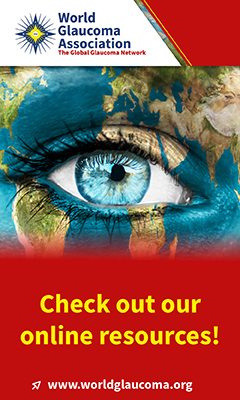advertisement

Editors Selection IGR 14-2
Comment


Comment by Clement Tham & Poemen Chan on:
82885 Review of hygiene and disinfection Recommendations for outpatient glaucoma care: A COVID era update, Shabto JM; De Moraes CG; Cioffi GA et al., Journal of Glaucoma, 2020; 29: 409-416
See also comment(s) by Ningli Wang & Chunyan Qiao • Luciano Quaranta • Brandon J. Wong • Rahat Husain & Tin Aung • Pradeep Ramulu • Michele C. Lim • Andrew Camp • Clement Tham & Poemen Chan •Anecdotal reports have suggested that the virus could also be transmitted by aerosol contact with conjunctiva.2 The proximity between ophthalmologists and patients during ophthalmic examination and the use of ophthalmic equipment (which could be a potential source of transmission if disinfection procedures are not performed properly), pose an infectious risk to eye care professionals and other patients in outpatient clinic. This paper by Shabto et al. summarized a set of recommendations for the disinfection of instruments and devices that are commonly used in glaucoma practice. The precautions could be divided into two different categories: (1) disinfection of the waiting room and patient rooms; and (2) disinfection of equipment and other instruments. The first aims to minimize the risk of transmission via contact with contaminated surfaces or objects; hourly cleaning of waiting rooms, restrooms, exam lanes, and office furniture is recommended. This should be done with appropriate disinfectant agents (e.g., diluted household bleach with > 1000 ppm sodium hypochlorite, 70% alcohol solution and common EPA-registered household disinfectants). Careful disinfection of equipment is important in order to prevent viral transmission via contaminated devices, which could become a potential vector of transmission if proper disinfection precautions are not taken. The authors also tabulated the cleaning and disinfection instruction from manufacturers of other instruments including visual field analyzer, optical coherence tomography (OCT) machinery, tonometers and lenses. Non-contact tonometry is not recommended because previous study demonstrated the formation of micro-aerosol on most eyes during air-puff tonometry.3 Single-use disposable instruments could be considered instead of instruments that are frequently handled either in direct contact (e.g., applanation tonometer prism) or are used in proximity to the eye (e.g., hand-held indirect lens). They also pointed out that the perimeter bowl of the visual field analyzer could be an important source of respiratory droplet accumulation, since SARS-CoV-2 can remain viable up to 72 hours after application on different types of surfaces (more stable on plastic and stainless steel than on copper and cardboard).4 It may be difficult to disinfect instruments such as the visual field analyzer. Therefore, routine investigation that involves these types of instruments should be deferred. Indeed, apart from ensuring environmental control, infection control measures during the COVID-19 pandemic should also aim at minimizing cross-infection within the hospital, as well as providing adequate support and protection to hospital staff. For instance, our hospital has reduced 40% of the outpatient attendance and elective surgery, as well as 90% of the general anesthesia procedures. All patients are screened for fever, travel history, contact and cluster history, and COVID-19-related symptoms before they enter the hospital. To support the hospital staff, we also ensure provision of adequate personal protective equipment (PPE) and clear guidelines on the level of PEE needed for different clinical situation. Other supportive measures include provision of work uniforms, easy access to alcohol-based hand rub, setting up new lunch areas, implementing a self-monitoring and reporting system, as well as regular updates and communication via an online education system.5 Eye care professionals are at high risk of acquiring COVID-19. Hygiene and disinfection precautions should be taken seriously, given that the pandemic has reached a scale that total eradication is unlikely and future recurrence of outbreak is possible.
References
- Chang, Xu H, Rebaza A, Sharma L, Dela Cruz CS. Protecting health-care workers from subclinical coronavirus infection. Lancet Respir Med 2020;8:e13.
- Lu CW, Liu XF, Jia ZF. 2019-nCoV transmission through the ocular surface must not be ignored. Lancet 2020;395:e39.
- Britt JM, Clifton BC, Barnebey HS, Mills RP. Microaerosol formation in noncontact 'air-puff' tonometry. Arch Ophthalmol 1991;109:225-228.
- van Doremalen N, Bushmaker T, Morris DH, et al. Aerosol and Surface Stability of SARS-CoV-2 as Compared with SARS-CoV-1. N Engl J Med 2020;382:1564-1567.
- Cheung SSL, Wong CYK, Chan JCK, et al. [Online First] Opthalmology in the time of COVID-19: experience from Hong Kong Eye Hospital. Int J Ophthalmol 2020;13(6):,doi:
Comments
The comment section on the IGR website is restricted to WGA#One members only. Please log-in through your WGA#One account to continue.Log-in through WGA#One

